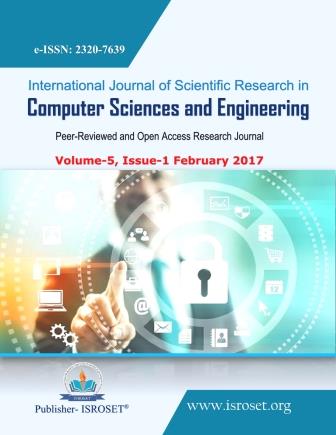Hybrid DWT, FFT and SVD based Watermarking Technique for Different wavelet Transforms
Keywords:
embedding, Watermarking, extraction, PSNRAbstract
imperceptibility and robustness requirements. Digital watermarking seems as an effective process of protecting multimedia contents such as copyright safeguard and authentication. In this paper, we endorse SVD founded digital watermarking procedure for powerful watermarking of digital pictures for copyright safety. In proposed research, a novel and robust digital watermarking method is introduced in which a mixture of DWT (Discrete Wavelet Transform) and FFT (Fast Fourier Transform) along with SVD (Singular Value Decomposition) is applied. Due to the usage of this combination of 3 techniques in our proposed work, it increases the robustness and imperceptibility of extracted image. One of the vital essential benefits of the proposed idea is the robustness of the system on extensive set of attacks. Analysis and experimental outcome show a lot accelerated effectiveness of the proposed method in evaluation with the pure SVD-established watermarking and the procedure without making use of some wavelet perform. The results are compared with Base Work in which single level DWT-SVD combination is taken for watermarking for copy right security. It is shown through PSNR (Peak signal-to-noise ratio) that it provided a very high imperceptibility. Experimental outcome verify that the proposed system given good quality picture value of watermarked pictures.
References
Naved Alam, “A Robust Video Watermarking Technique using DWT, DCT, and FFT”. 2016, IJARCSSE
Manjinder Kaur and Varinder Kaur Attri “A Survey on Digital Image Watermarking and Its Techniques” International Journal of Signal Processing, Image Processing and Pattern Recognition Vol. 8, No. 5 (2015), pp. 145-150
Mei Jiansheng, Li Sukang, “A Digital Watermarking Algorithm Based On DCT and DWT”, Proceedings of the 2009 International Symposium on Web Information Systems and Applications (WISA‟09) Nanchang, P. R. China, May 22-24, 2009, pp. 104-107
Prabhishek Singh, R S Chadha “A Survey of Digital Watermarking Techniques, Applications and Attacks”International Journal of Engineering and Innovative Technology (IJEIT) Volume 2, Issue 9, March 2013.
Ashminder Kaur, Ms. Lofty, "A Review of Colour Image Watermarking Scheme Based Image Normalized", International Journal of Computer Sciences and Engineering, Volume-04, Issue-07, Page No (183-185), Jul -2016
Rupali Nayyar, Randhir Singh, Ritika, “Improved Audio Watermarking Using Arnold Transform, DWT and Modified SVD”. IJIRSET.2016
Priya Chandrakar and Shahana Gajala Qureshi, "A Review on Video Watermarking", International Journal of Computer Sciences and Engineering, Volume-03, Issue-04, Page No (48-52), Apr -2015.
Shaikh Shoaib, Prof. R. C. Mahajan “Authenticating Using Secret Key in Digital Video Watermarking Using 3- Level DWT” International Conference on Communication, Information & Computing Technology (ICCICT), Jan. 16-17,IEEE 2015.
Baiying Lei, Ing Yann Soon, and Ee-Leng Tan “Robust SVD-Based Audio Watermarking Scheme With Differential Evolution Optimization” IEEE Transactions On Audio, Speech, And Language Processing, Vol. 21, No. 11, November 2013.
Y. Shantikumar Singh, B. Pushpa Devi, and Kh. Manglem Singh, “A Review of Different Techniques on Digital Image Watermarking Scheme”, International Journal of Engineering Research, ISSN:2319- 6890, Volume No.2, Issue No.3, pp:193-199, 01 July 2013.
Chen Li, Cheng Yang, Wei Li, “Wavelet Bases and Decomposition Series in the Digital Image Watermarking”. Advances in Intelligent and Soft Computing, Advances in Multimedia, Software Engineering and Computing Vol.2 , s.l. : Springer, 2012.
A.Kala and K.Thaiyalnayaki, "Chaos based Image Watermarking using IWT and SVD", International Journal of Computer Sciences and Engineering, Volume-03, Issue-01, Page No (72-75), Jan -2015
Downloads
Published
How to Cite
Issue
Section
License
Copyright (c) 2025 Kanchan Thakur

This work is licensed under a Creative Commons Attribution 4.0 International License.
Authors contributing to this journal agree to publish their articles under the Creative Commons Attribution 4.0 International License, allowing third parties to share their work (copy, distribute, transmit) and to adapt it, under the condition that the authors are given credit and that in the event of reuse or distribution, the terms of this license are made clear.







